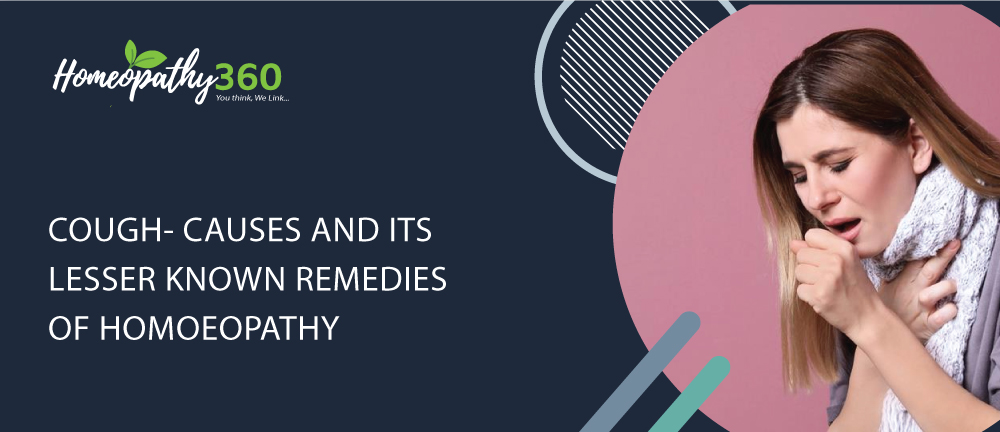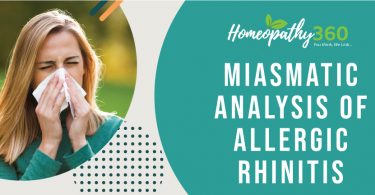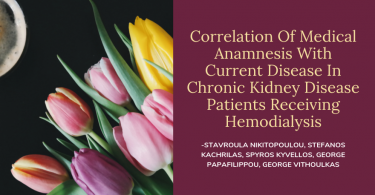
ABSTRACT– A cough is one of the most common medical complaints counting for as numerous
as 30 million clinical visits per time. Up to 40 of these complaints affect in referral to a
pulmonologist. A cough is an ingrain primitive kickback and acts as part of the body’s
vulnerable system to cover against foreign accoutrements. Coughing is associated with a wide
multifariousness of clinical associations and etiologies. Likewise, there are no ideal tools to
measure or clinically quantify a cough. As similar, evaluation of a cough is originally a private
and largely variable assessment. Given the vagueness of this symptom’s nature, along with the
threat of an insidious underpinning etiology, heavy impact on quality of life, and a lack of
objective tools, coughing should be estimated and treated with Homoeopathy as an important
issue until a benign source is insulated.
KEYWORDS-Cough, Homoeopathy
INTRODUCTION- Cough is an essential protective function for human airways and lungs. Without an effective
cough reflex, humans are at risk of retained airway secretions and aspirated material
predisposing to infection, atelectasis, and respiratory compromise.
CAUSES
- ACUTE
• Inhaled foreign body
• Respiratory tract infection - CHRONIC
PRODUCTIVE
• COPD (mucoid/purulent)
Origin: Bronchi
Clinical features: Dry or productive, worse in morning
• TB (bloodstained) (common where TB is endemic) Origin:
Lung parenchyma Clinical
features: Productive (often with haemoptysis)
• Bronchiectasis (purulent)
Origin: Lung parenchyma
Clinical features: Productive, changes in posture induce sputum production.
• Pulmonary oedema (pink, frothy)
Origin: Lung parenchyma
Clinical features: Often at night
• Lung cancer (bloodstained)
Origin: Bronchi
• Pulmonary embolism (bloodstained)
NON-PRODUCTIVE
• Asthma
Origin: Bronchi
Clinical features: Usually dry, worse at night.
• Post-nasal drip
Origin- Pharynx
Clinical features: History of chronic rhinitis
• Gastro-oesophageal reflux
Origin: Aspiration
Clinical features: History of acid reflux, heartburn, hiatus hernia and obesity.
• Drugs (ACE inhibitors)
Origin: Drug side-effect
Clinical features: Dry cough
• Sarcoidosis
HISTORY
Onset and duration
Cough can be acute or chronic (that has persisted above 3 weeks). Sudden onset of an
Unrelenting bout of coughing is may be due to an inhaled foreign body which is large enough to
occlude the airway, coughing abruptly ceases and is supervened by cyanosis and eventually
unconsciousness.
Sputum
Cough of purulent sputum is suggestive of chronic bronchitis and bronchiectasis. Expectoration
of bloodstained sputum tends to be the complaint of patients with bronchogenic carcinoma,
pulmonary embolism and TB.
Smoking history
Smoking alone can cause a chronic cough; also, a chain smoker predisposes to bronchogenic
carcinoma and chronic bronchitis.
Associated symptoms
Wheezing with breathlessness is common with asthma. This should be differentiated from the
monophonic wheeze, which is suggestive of intraluminal obstruction from foreign bodies or
tumor.
Most of the respiratory causes of coughing is accompanied by shortness of breath, but sudden
onset of dyspnea also result from aspiration or pulmonary embolism.
Pleuritic chest pain is experienced in pulmonary emboli and pneumonia; unrelenting chest pain is
more indicative of bony metastasis from the lung carcinoma. Retrosternal burning chest pain is
an indicative of gastro-oesophageal reflux disease, and the associated cough produced is due to
aspiration of refluxed material.
EXAMINATION
Temperature
The presence of pyrexia usually indicates an infective cause; also may be raised with pulmonary
embolism.
Inspection and palpation
With COPD the chest may be barrel-shaped. Patients suffering with lung cancer or TB appears
cachectic. Cyanosis is found in pulmonary embolism and COPD. Clubbing is associated with
bronchial carcinoma and bronchiectasis. The supraclavicular nodes is palpable with respiratory
tract infections, TB and lung cancer.
Auscultation
On auscultation, coarse crepitations can be heard in bronchiectasis and pulmonary oedema.
Auscultatory features of pleural effusion (dull to percussion, reduced breath sounds, decreased
vocal resonance). Wheezing is a finding of asthma, and a fixed inspiratory wheeze may be heard
with bronchial luminal obstruction.
GENERAL INVESTIGATIONS
■ Sputum cultures
■ Peak flow
■ WCC
■ CXR
Commonest form of Investigation. Dilated bronchi with persistent areas of infection are
suggestive of bronchiectasis. Apical pulmonary consolidation with calcification and hilar
lymphadenopathy is found in TB. The presence of pulmonary oedema is identified by bilateral
patchy shadowing. In Bronchial carcinoma, hilar mass can be seen or with collapse and
consolidation of the lung due to airway obstruction. Bilateral hilar lymphadenopathy is also a
finding of sarcoidosis.
■ Respiratory function tests
SPECIFIC INVESTIGATIONS
■ V/Q scan
Indicated in the diagnosis of pulmonary embolism.
■ Pulmonary angiography
May be indicated in pulmonary embolism when surgery or thrombolysis is being considered.
■ CT thorax
Useful for the diagnosis and staging of lung cancer; also specific for the diagnosis of
bronchiectasis.
■ pH studies
24-hour pH monitoring may be required when a diagnosis of gastro-oesophageal reflux disease
cannot be made on the history alone.
MANAGEMENT WITH LESSER KNOWN REMEDIES OF HOMOEOPATHY-
Acalypha Indica- The chief employment of this Euphorbian has been in violent dry
cough followed by bloody expectoration. Expectoration of pure blood in the morning,
and dark clotted blood in the evening. Cough most violent at night. Dulness of chest on
percussion; constant severe pain in chest.
Allium Sativum– Chronic bronchial catarrh with profuse mucous expectoration;
periodical asthma; a case of permanent dyspnoea.
Ambrosia Artemisiaefolia- Irritation of trachea and bronchial tubes, with asthmatic
attacks. Wheezy cough.
Ammonium Causticum- Difficult respiration. Accumulation of mucus with incessant
coughing.
Narcissus poeticus– A remedy for cough and bronchitis. Continuous cough. Coryza;
frontal headache. Convulsive stage of whooping cough.
Flavus- Takes cold easily. Cough wakes him up at 1- 1.30 a.m. Dyspnea, worse towards
2 a.m.; wakes up suffocated. Dry cough, worse in the morning. Has a cold regularly,
coughs and expectorates. Feeling like feathers in the throat. Sore throat after wet feet
Wiesbaden- Loose cough in morning. Expectoration: lumps of mucus; firm, tenacious
mucus; sweetish after drinking the water; salt.-Respiration in the bath, at first accelerated,
gradually becoming slow, after which gradually increases.-Short breath on walking, on
ascending.
Wyethia– Burning sensation in bronchial tubes. Dry, hacking cough, caused by tickling
in epiglottis. Persistent, dry, hacking, nervous night cough
Uranium Nitricum- Bronchitis, with copious mucous expectoration and much
emaciation; chronic colds. Cough with purulent discharge from left nostril; lung
infiltrated with grey tubercle.
Variolinum– Oppressed respiration. Asthma. Troublesome cough, with serous and
sometimes bloody sputa. Hawking up thick, viscid slime, smelling bad.
Viola odorata- Hoarseness, followed by coryza. Dyspnoea with violent cough; < in
daytime. By day chiefly, in long-lasting spells, dry, short, violent cough, with much
dyspnoea. Whooping-cough in nervous, thin little girls. Sputum profuse, clear, ropy,
jelly-like. Respiration difficult, and scarcely perceptible, with painful expiration,
excessive anguish, and violent palpitation of heart.-Shortness of breath
Wildbad- Dry cough. Breathing oppressed; on ascending stairs.
Yucca Filamentosa- Hard, rattling cough.
Zizia– Roughness in upper part of larynx whet, inspiring or coughing. Larynx raw from
coughing. Trachea sensitive to touch. Dry cough, with shooting pains in chest. Tight
cough, from deep breath; from dryness of larynx.-Short, dry cough, with severe stitching
in r. side and sense of suffocation.-Breathing oppressed, cannot keep lying down.-
Asthma.
Discussion and Conclusion- Treatment of the causes of cough can be an effective
treatment. However, in allopathy, there are no effective treatments controlling the cough
response with an acceptable therapeutic ratio. In homoeopathy, the prescription is based
on totality of the symptoms. Also sometimes in homoeopathy there are lacking of general
symptoms so, prescription is based on pathological symptomatology of the patient.
Homoeopathic Materia-medica is enriched with many such symptoms in lesser known
medicines. Their effectiveness has to be explored further to relief the suffering of
humanity as well as research perspective to enrich the homoeopathic literature.
REFERENCES–
- Reid PT, Innes JA. Davidson’s Principles and Practice of Medicine, 23 rd Edition, Elsevier Health
Sciences, 2018. - Fauci AS, Braunwald E, Kasper DL, Hauser SL, Longo DL, Jameson JL, editors. McFadden ER.
Harrison’s principles of internal medicine. 20th ed. New York: McGraw-Hill; 2012. - Andrew T. Raftery, Eric Lim, Andrew J. K. Östör, ChurChill’s PoCketbook of
Differential Diagnosis, 3 rd Edition, elsevier limited 2010 - Clarke JH. A Dictionary of Practical Materia Medica. New Delhi: B. Jain Publishers, 1999
- Boericke W. Pocket Manual of Homoeopathic Materia Medica and Repertory. 9th Edition. New
Delhi: B. Jain Publishers (P) Ltd, 2009. - Kent JT. Lectures on Homoeopathy Materia Medica, New Delhi: B. Jain Publishers (P) Ltd, 2013.
- Allen HC. Keynotes and Characteristics with Comparisons of some of Leading Remedies of the
Materia Medica. 4 th Edition. Philadelphia, Pa - Nash E. B. Leaders in Homoeopathic Therapeutics. B. Jain Publishers (P) Ltd, 1986
About Author:
DR. ASHOK YADAV, (H.O.D. PRACTICE OF MEDICINE),
DR. VIRENDRA CHAUHAN, (ASS.PROF. PRACTICE OF MEDICINE)
DR. ANANDITA DEBNATH (M.D. PGR, PRACTICE OF MEDICINE)
DR. HIMANI SHAH (M.D. PGR, PRACTICE OF MEDICINE)





